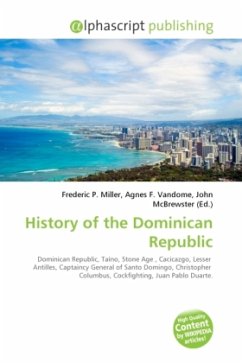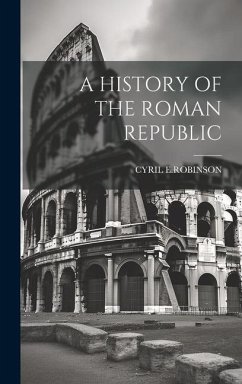
History of the Dominican Republic
Versandkostenfrei!
Versandfertig in 6-10 Tagen
26,99 €
inkl. MwSt.

PAYBACK Punkte
13 °P sammeln!
The Dominican Republic occupies the eastern two-thirds of the island of Hispaniola, in the Greater Antilles. Successive waves of Arawak migrants, moving northward from the Orinoco delta in South America, settled the islands of the Caribbean. Around A.D. 600, the Taíno Indians, a late Stone Age Arawak culture, arrived on the island, displacing the previous inhabitants. They were organized into cacicazgos (chiefdoms), each led by a cacique (chief). The final Arawak migrants, the Caribs, began moving up the Lesser Antilles in the 1100s, and were raiding Taíno villages on the island's eastern co...
The Dominican Republic occupies the eastern two-thirds of the island of Hispaniola, in the Greater Antilles. Successive waves of Arawak migrants, moving northward from the Orinoco delta in South America, settled the islands of the Caribbean. Around A.D. 600, the Taíno Indians, a late Stone Age Arawak culture, arrived on the island, displacing the previous inhabitants. They were organized into cacicazgos (chiefdoms), each led by a cacique (chief). The final Arawak migrants, the Caribs, began moving up the Lesser Antilles in the 1100s, and were raiding Taíno villages on the island's eastern coast by the time the Spanish arrived in 1492.












